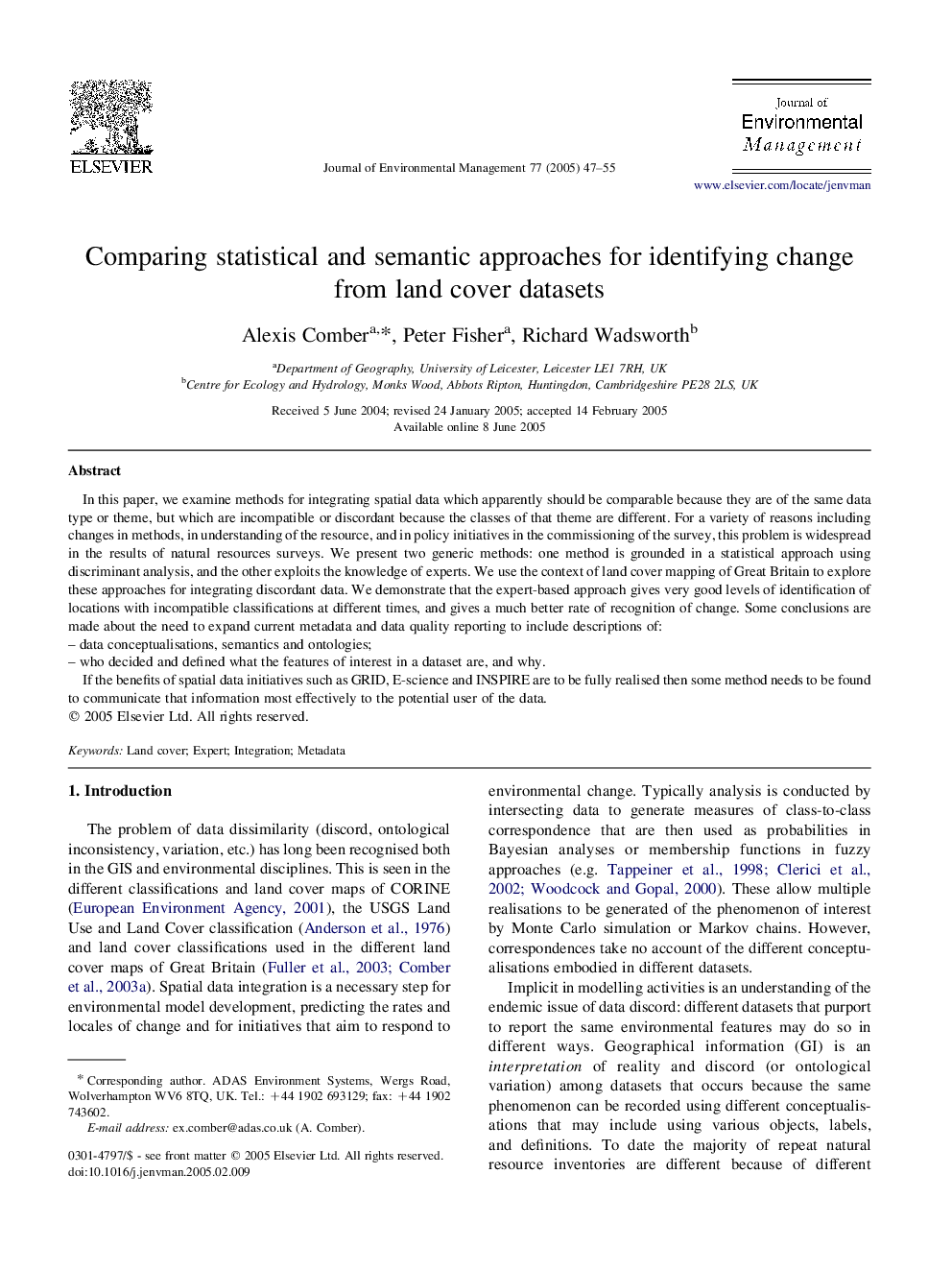| Article ID | Journal | Published Year | Pages | File Type |
|---|---|---|---|---|
| 10505665 | Journal of Environmental Management | 2005 | 9 Pages |
Abstract
In this paper, we examine methods for integrating spatial data which apparently should be comparable because they are of the same data type or theme, but which are incompatible or discordant because the classes of that theme are different. For a variety of reasons including changes in methods, in understanding of the resource, and in policy initiatives in the commissioning of the survey, this problem is widespread in the results of natural resources surveys. We present two generic methods: one method is grounded in a statistical approach using discriminant analysis, and the other exploits the knowledge of experts. We use the context of land cover mapping of Great Britain to explore these approaches for integrating discordant data. We demonstrate that the expert-based approach gives very good levels of identification of locations with incompatible classifications at different times, and gives a much better rate of recognition of change. Some conclusions are made about the need to expand current metadata and data quality reporting to include descriptions of:- data conceptualisations, semantics and ontologies;- who decided and defined what the features of interest in a dataset are, and why.If the benefits of spatial data initiatives such as GRID, E-science and INSPIRE are to be fully realised then some method needs to be found to communicate that information most effectively to the potential user of the data.
Keywords
Related Topics
Physical Sciences and Engineering
Energy
Renewable Energy, Sustainability and the Environment
Authors
Alexis Comber, Peter Fisher, Richard Wadsworth,
